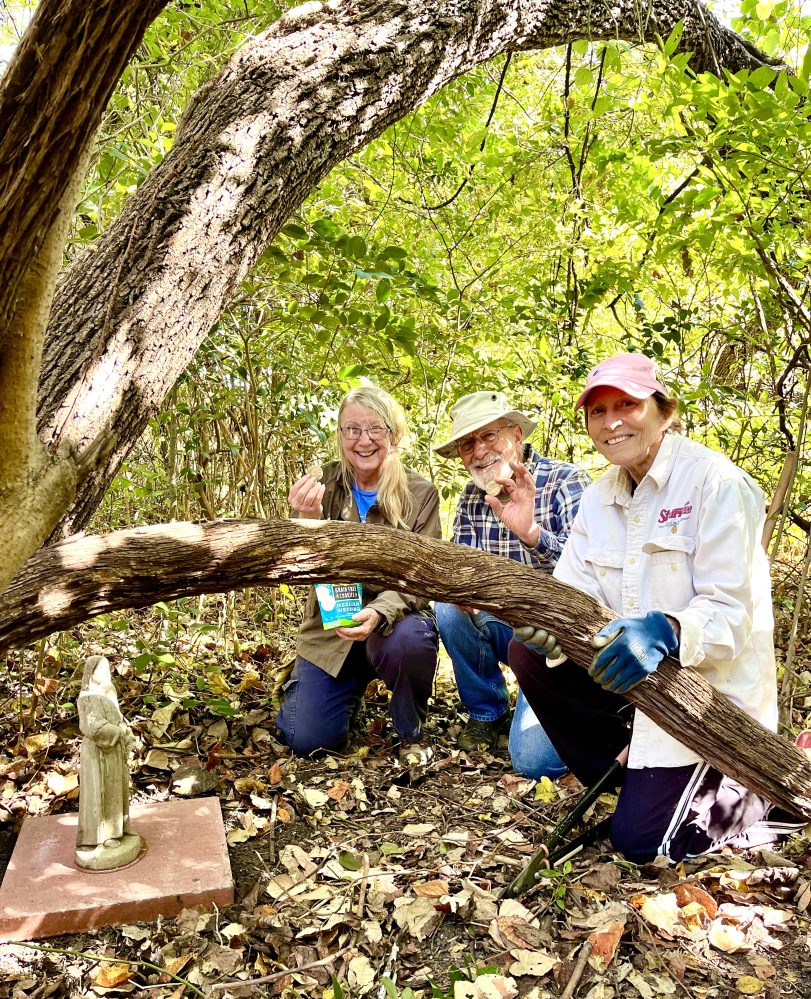
Greenbelt Guild: Dams & Druids
By Amy Martin, Greenbelt coordinator
A great day in the greenbelt! What a superb team! A beautiful, cool morning last Sunday. We continue to extend the Woods Trail eastward. We are now just one house away from Sylvania/Lippitt!
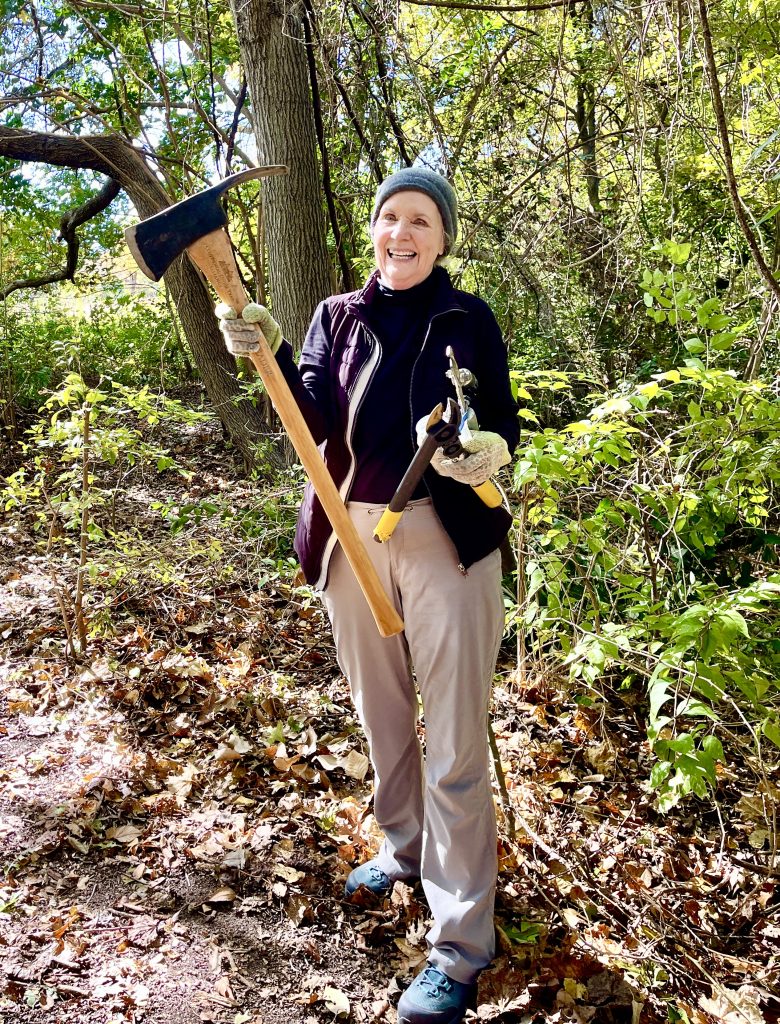
Making the Erosion Dam
The idea of an erosion dam is to create two parallel lines of large stakes, then fill that chasm with long privet trunks. The erosion dam lets rainfall through, but captures rain-carried silt. There was a gentle gully that crossed the trail, but gentle gullies eventually become steep ones. So we try an erosion dam to slow that process.

Francis crafted some big ole large stakes and brought a sledgehammer. Mark and Keith use it to slam those suckers into the packed ground. Most cleverly, they cut a couple of skinny privets in place and use them for stakes.
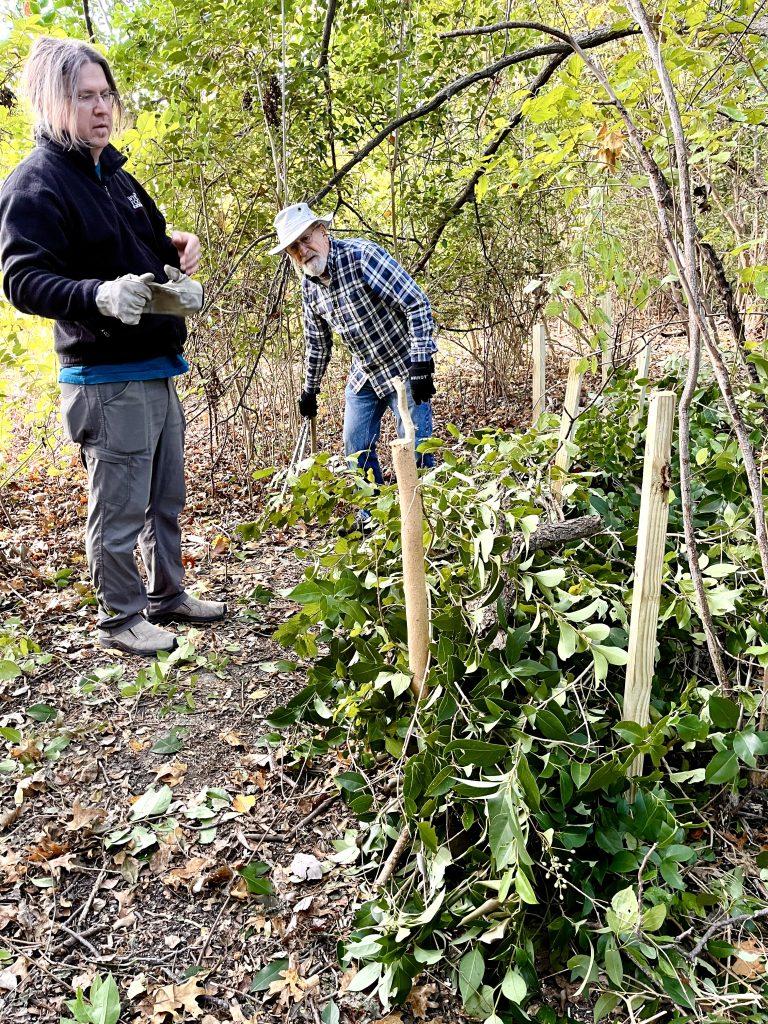
As they work, Katherine and I extract piled-up privet trunks we’d cut last restoration day, and cut several new ones. We pass them along to the dam team, who also raid the pile for more.

The erosion dam not only stems gully formation, but it also provides habitat and shelter from predators for small critters like rodents and reptiles. Tiny birds like barrows and titmice can find warmth there in the winter.
Eastward, Ho!
Meanwhile, Hala and Lauren tackle a nasty wall of thick briar. But beyond it appears to be easy woods. Some briar is beneficial, but not this nasty species. Better to encourage the Virginia creeper to grow. I dispatched a fair amount of poison ivy, which turns a lovely orange and yellow in the fall.

Once past the immense bois d’arc, the duo reveals a marvelous, gigantic vine (grape, we think), winding and contorting about the base of a large leaning tree — a perfect location for the Dixon Branch Druid to come to rest.
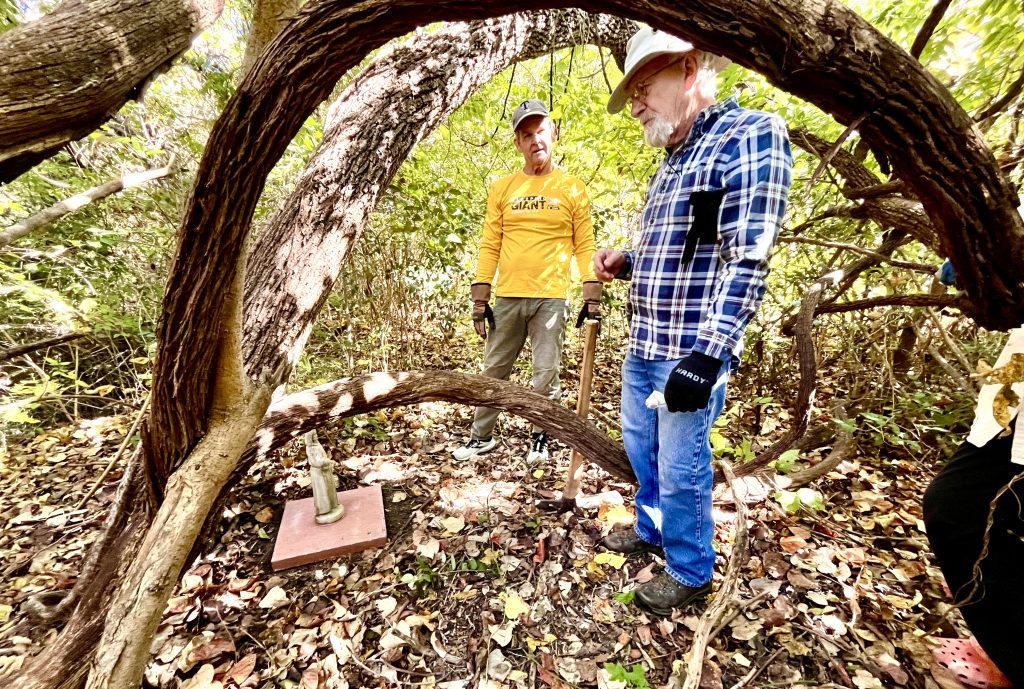
Installing the Druid
A couple decades ago, Michael Parkey stumbled upon a St. Francis of Assisi statue in the woods. It got dubbed the Druid of Eastwood (later named the Dixon Branch Druid). But then we lost track of it when the woods became greatly overgrown with privet.
Thanks to Steve Pickett working on the Woods Trail eastward extension, it was found again, but broken in two. Scooter Smith cleaned it up and patched it back together again. The statue is not large, so we bought it a paving-stone base that weighs a great deal so it can’t be easily stolen.

Francis and Keith used heavy epoxy to attach the Druid. Perfect! We installed it in the area that Hala and Lauren uncovered.
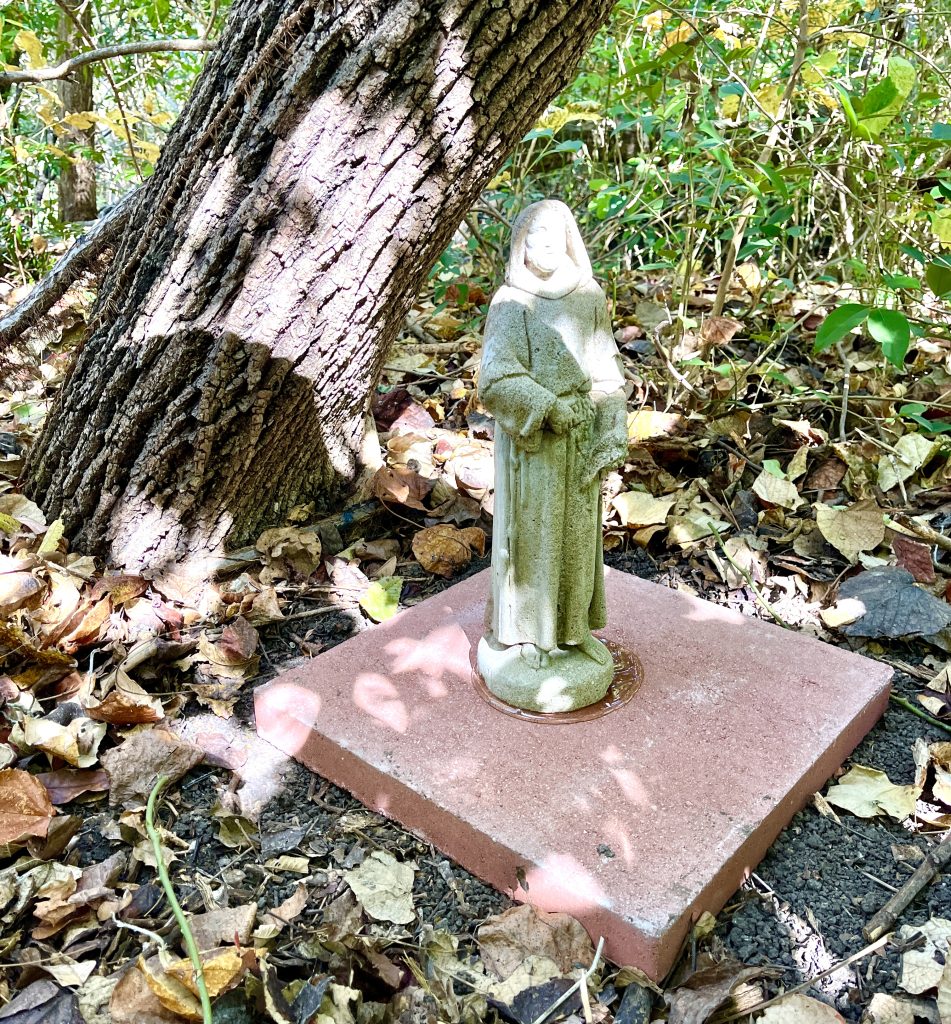
Francis (the other one), Hala, Keith, and I toast to St. Francis with almond cookies, his favorite — several since we’d worked up an appetite. Smiles all around.

Stop by and offer a prayer that compassion endures toward nature and its wildlife, toward domesticated animals, and toward all people.
Why We Do This
Privet chokes forests, a slow-motion smothering. The escaped landscape shrub from China lacks the insects and diseases of its homeland, so it can run rampant. When we open the forest by removing this invasive species, the woods returns to its true self.

Every time we remove an invasive shrub or tree, we liberate wildlife-enriching plants struggling to survive, some very small. Now they’ll receive the water, nutrients, and sunlight they need to flourish.
These beauties include yaupon and possumhaw with red berries, and wildflowers like Drummond’s asters. Most exciting is the plethora of rusty blackhaw viburnum, an uncommon shrub with white cluster flowers, rusty fall foliage, and dark purple berries.

It may look a little bare, but it takes a couple of years for the land to restore. We’ll help by seeding grasses and wildflowers, and planting woodies like corbalberry, elderberry, and black walnuts for wildlife habitat and food. And a few pretties like heartleaf skullcap.
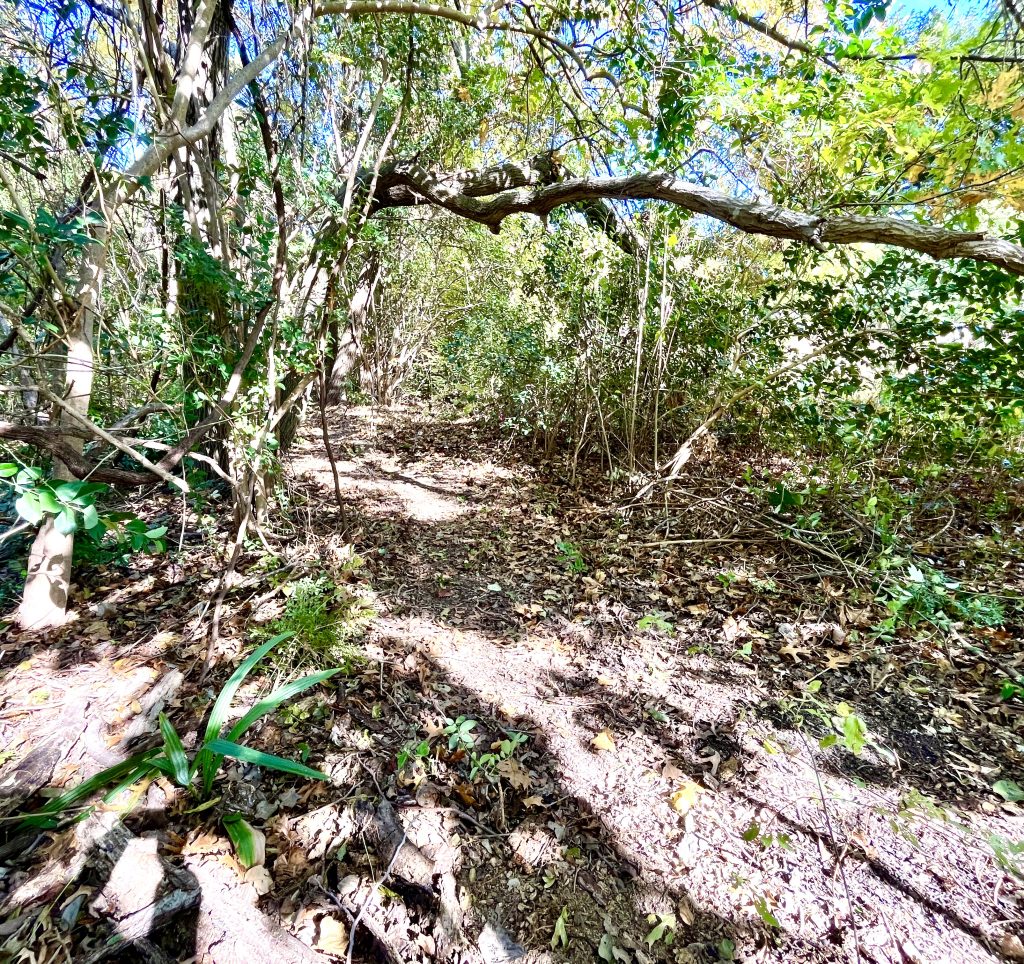
In two years, listen for increasing bird song, watch for more burrows and nests. Sit a spell and enjoy. Then join the Greenbelt Guild restoration days, give a membership donation, or contribute to greenbelt fundraising campaigns.
The Trail’s Future
True to Guild trailmaking tradition, as the last member packs up, an outdoorsy young man ambles the brand new trail. People really need these trails for physical and mental health.
But be careful of the short stumps in the trail from cut privet. Once we’re sure they won’t re-sprout, we’ll cut them level with the ground.
Join our next restoration day: November 30 Sunday, 10 am to 1 pm. Email Amy to get on our newsletter list.